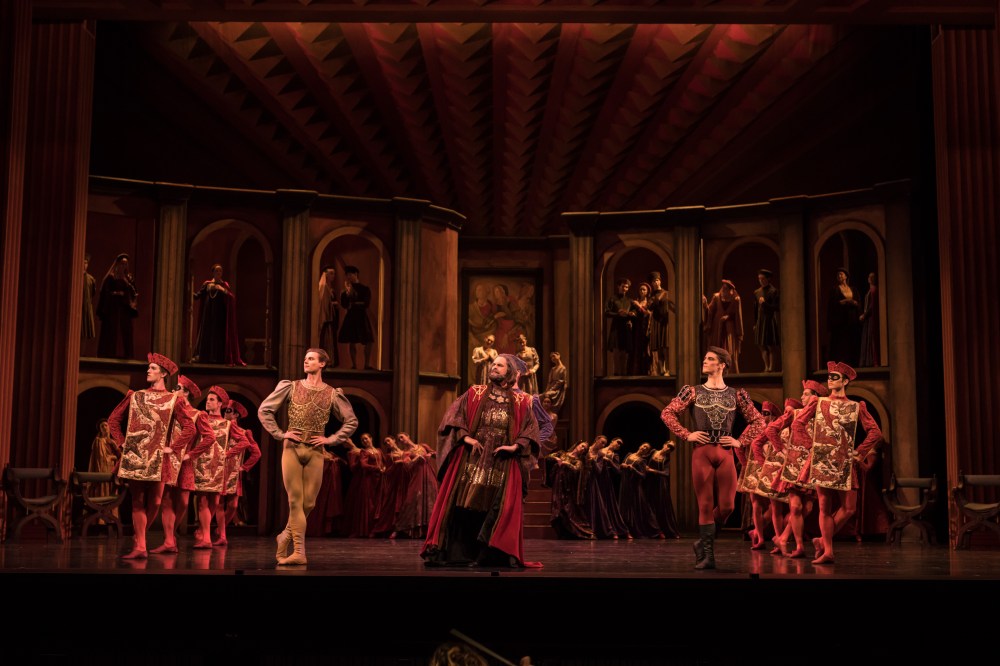Queensland Performing Arts Centre, Brisbane, August 28.
When Queensland Ballet staged Kenneth MacMillan’s Romeo and Juliet in 2014 the then-small company took a huge risk, although one mitigated by bringing in superstars Carlos Acosta, Tamara Rojo and Steven McRae to partner QB principal artists. The gamble paid off. The season was a record-breaking success and, more importantly, the company looked terrific from top to bottom, right down to the extras and students needed to animate MacMillan’s sprawling canvas and Prokofiev’s richly coloured score.

This time around there were no visiting luminaries and, on opening night, a risk of a different kind. Playing the doomed young lovers were dancers plucked from the lower end of QB’s ranks, 24-year-old soloist Mia Heathcote and company artist Patricio Revé, 21. (Both were promoted onstage at the end of the performance.)
Revé, who joined the company only last year, has the marvellous combination of dash and silkiness that seems to be the birthright of male Cuban dancers. Heathcote is a luminous beauty whose dancing has gorgeous breadth and fullness. They looked wonderful together but needed to find a greater sense of rapture and abandon in the ravishing series of pas de deux around which MacMillan built the ballet. Romeo and Juliet have a truly dangerous relationship and it felt too careful.

The production around them pulsated with life and in the pit the Queensland Symphony Orchestra played a blinder with its music director Alondra de la Parra at the helm. Bravi to the brass in particular. It was piquant casting to have former Australian Ballet principal artist Steven Heathcote – Mia’s father – as Lord Capulet. He’s lost none of his stage presence. Nor has former QB principal Rachael Walsh mislaid hers. She reprised her searing Lady Capulet, shedding any vestige of propriety as she keened over the body of her dead kinsman Tybalt, again given glowering charisma by Vito Bernasconi. Kohei Iwamoto was a charming, slightly underpowered Mercutio and Joel Woellner as good as it’s possible to be in the thankless role of Paris.
Romeo and Juliet (1965) was MacMillan’s first three-act ballet but he seemed to know instinctively how to fill a stage excitingly and make a world. Everywhere you look there are people fighting, dancing, plotting, chatting and flirting. The big set-piece scenes of quarrelling clans in the marketplace and the Capulets’ lavish ball are as good as it gets in narrative ballet. And then there are the smaller moments that underscore the tragedy to come – Juliet playing with her nurse and her doll; Juliet and Romeo coming face to face in the ballroom and time standing still. This is where Heathcote and Revé were most affecting.
Heathcote has been one to watch from her earliest days with QB. She has always thrown herself heart and soul into her dancing and often looked passionate but slightly unruly. In some ways her first Juliet showed something of the reverse: the dancing was splendid but the emotions more reined in. The right balance will surely come as Heathcote takes on other challenging roles in big ballets. She is absolutely a star in the making.
A version of this review first appeared in The Australian on August 30.